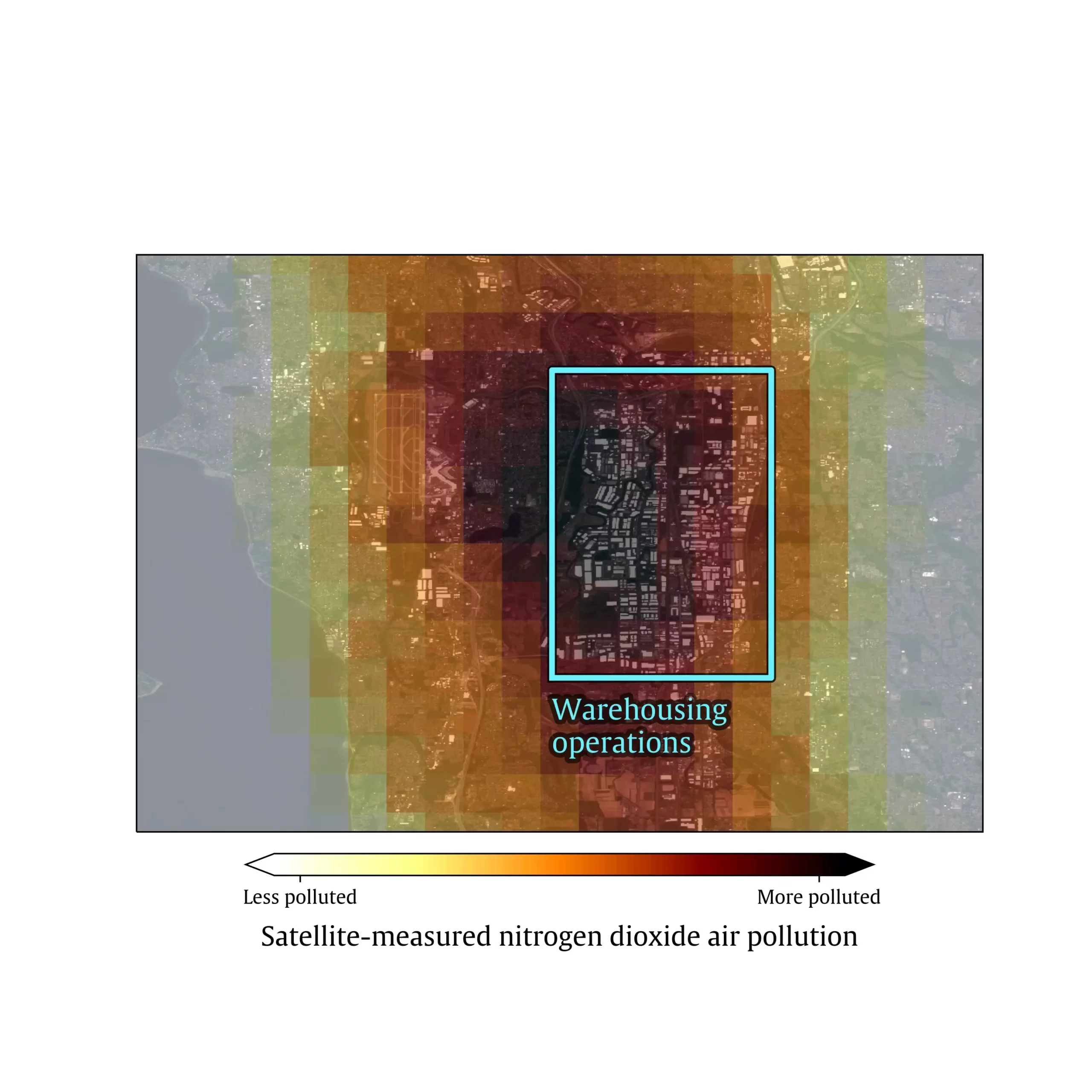The rise of e-commerce in America has significantly increased the demand for delivery services, leading to a boom in the warehousing industry. However, a recent study published in Nature Communications has shed light on the detrimental effects of large warehouses on air quality in neighboring communities. The study, titled “Air pollution impacts from warehousing in the United States uncovered with satellite data,” highlights how communities located near these warehouses are exposed to a 20% higher concentration of nitrogen dioxide, a traffic-related air pollutant that can have severe health consequences, such as asthma and other respiratory conditions.
The research, led by Gaige Kerr and his team at the George Washington University Milken Institute School of Public Health, utilized satellite data from the European Space Agency to analyze the impact of nearly 150,000 large warehouses across the United States. The study revealed that increased truck traffic associated with these warehouses contributes to higher levels of nitrogen dioxide emissions, as well as other harmful pollutants. Furthermore, communities of color are disproportionately affected, as they tend to reside in close proximity to these warehouses, especially in densely clustered areas.
One of the significant findings of the study was that nitrogen dioxide levels near warehouses increased even further when there was greater heavy-duty vehicle activity in the vicinity. Warehouses with more loading docks and parking spaces were identified as attracting the most traffic and were associated with the highest nitrogen dioxide levels. Additionally, it was observed that communities with large racial and ethnic minority populations are more likely to be located near warehouses, resulting in increased exposure to nitrogen dioxide and other pollutants.
While warehouses are dispersed throughout the United States, the study revealed that 20% of them are concentrated in just 10 counties, including Los Angeles, California; Harris, Texas; Cook, Illinois; and other metropolitan areas. The pandemic played a pivotal role in accelerating the growth of the e-commerce industry, leading to an influx of consumer goods handled by warehouses. Major players in the industry, such as Amazon, have contributed to the transportation infrastructure by operating thousands of delivery vans and semi-trailers.
Previous studies have highlighted the environmental impact of warehouses on local communities, but this nationwide study is the first to quantify the extent of pollution exposure faced by residents near these facilities. The researchers emphasize the urgent need for regulations that promote zero-emission vehicle use in logistics, particularly to protect vulnerable communities living in proximity to industrial hubs. Industry leaders and utilities are encouraged to play a crucial role in implementing sustainable practices to mitigate air pollution and safeguard public health.
The findings of this study underscore the importance of recognizing and addressing the environmental disparities faced by communities near warehouses. By promoting cleaner air and reducing harmful emissions, we can create a healthier and more sustainable future for all residents, regardless of their proximity to industrial facilities.


Leave a Reply